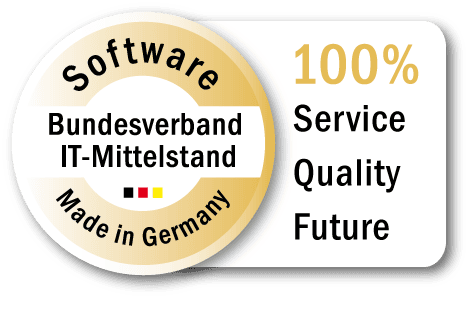In the Industrial IoT, the concept of the Unified Namespace (UNS) has established itself as a strategic step towards efficient data management. Successful implementation of the concept includes the design and development of the UNS architecture. The following functional components are crucial when implementing an Industrial Unified Namespace (UNS):
1. Component: Connectivity for seamless integration of Unified Namespace
The connectivity layer is crucial for a Unified Namespace (UNS), as this layer serves as a fundamental element for the integration of various components within the industrial ecosystem. In industrial environments, various IT systems, machines, sensors and devices work with different protocols and communication standards. The connectivity layer acts as a universal translator that enables these systems to communicate effectively with the Industrial UNS.
2. Component: Harmonization – the real hero of a scalable UNS
The harmonization layer is the real hero and forms the backbone of a scalable UNS architecture. This is because in the heterogeneous world of OT systems, data sources speak different languages. In addition, these systems work with manufacturer-specific data structures and semantics. Without their harmonization, no UNIFIED namespace – and you end up with individual OT / IT integration projects again. Just like the old world of point-to-point integration of OT / IT systems. By creating a unified language space, the Harmonization Layer eliminates potential data chaos and enables consistent and effective data processing within your UNS.
3. Komponente: Message Broker
In the field of industrial communication, MQTT and/or Kafka brokers form the core of a UNS architecture. The message brokers enable bidirectional OT/IT communication in “real time”. The lightweight nature of MQTT is suitable for connecting IoT devices such as machines, while Kafka provides a reliable backbone for event processing and streaming analytics.
4. Component: Microservices for scalability in dynamic environments
Microservices form an agile data processing layer within the UNS architecture. They divide complex functions into modular and manageable components. Each microservice fulfills a specific function (e.g. the calculation of a live OEE), which keeps the architecture flexible, efficient and easy to maintain. This makes it possible to react to changes, for example in the requirements of agile data analytics projects. This makes it possible to react to changes, for example in the requirements of agile data analytics projects.
Conclusion
Each component of the UNS architecture plays an important role in the implementation of a scalable Industrial Unified Namespace (UNS) architecture. The connectivity layer ensures the seamless integration of your OT and IT systems. The harmonization layer ensures standardization, the message broker enables real-time communication and the microservices ensure scalability despite dynamic use cases. A basic understanding of the importance of these critical components is the basis for a robust and sustainable implementation of an Industrial Unified Namespace (UNS) architecture.


